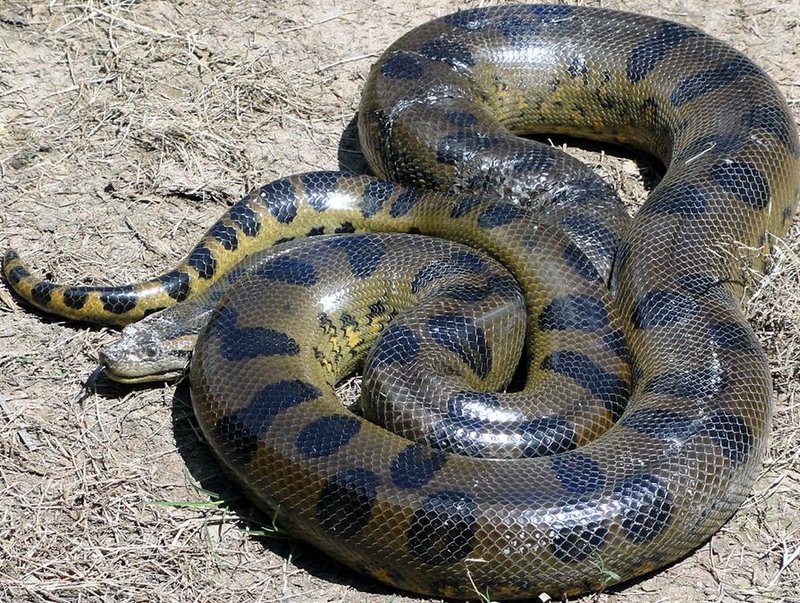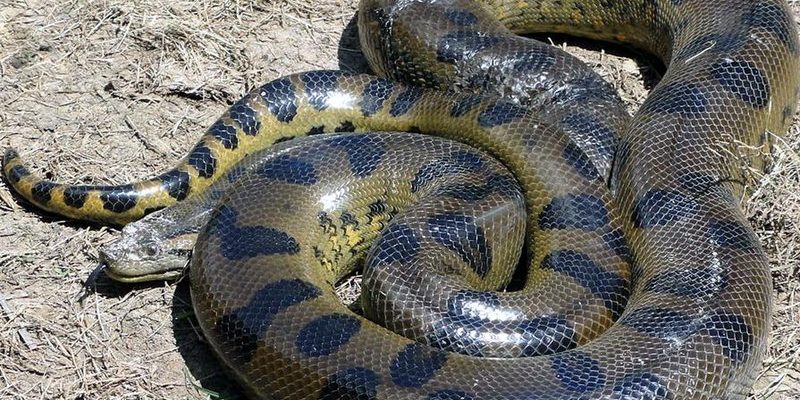
The green anaconda, or *Eunectes murinus*, is often overshadowed by its more famous cousin, the boa constrictor. However, this snake is truly a marvel of nature, renowned for its incredible adaptations and unique behaviors. This article will take you through ten incredible facts about the green anaconda that you may not know. From their habitat to their hunting techniques, we’ll explore what makes these snakes so special.
1. The Heaviest Snake in the World
You might be wondering how heavy the green anaconda can actually get. Well, these snakes can weigh over 500 pounds (225 kilograms), making them the heaviest snake on the planet! Their massive girth allows them to tackle prey that smaller snakes simply can’t handle. Long and thick, anacondas can reach lengths of up to 30 feet (9 meters), though the average is more commonly around 20 feet (6 meters).
Imagine this: a snake that can wrap around a full-grown deer and squeeze tightly enough to subdue it! They often hunt in water, ambushing animals that come too close to the edge. This combination of strength and stealth makes them formidable predators in their natural habitat.
2. Masterful Swimmers
The green anaconda is perfectly designed for a life spent in water. With its strong, muscular body and flattened tail, it glides effortlessly through rivers, swamps, and marshes. You might see them basking on the banks or swimming with their nostrils just above water for breathing.
These snakes are incredibly agile in the water, allowing them to chase fish and other prey. In fact, anacondas are capable of swimming long distances, sometimes covering several miles. Imagine floating gracefully through the murky water, waiting quietly like a stealthy shadow before launching a surprise attack!
3. Ambush Predators
Here’s the thing: green anacondas don’t chase their food like some other animals do. Instead, they prefer an ambush style of hunting. When the opportunity presents itself, they strike with lightning speed, using their powerful bodies to constrict and overpower their prey.
Their diet primarily consists of fish, birds, mammals, and even larger animals like capybaras and caimans. With incredible patience, they can remain coiled and hidden for hours, waiting for the right moment to strike. This stealthy approach is one reason they succeed as hunters in the wild.
4. Reproduction and Life Cycle
The green anaconda has a fascinating reproductive strategy. They are ovoviviparous, meaning that females give live birth rather than laying eggs. After mating, the female can carry the developing young for up to six months before giving birth to a whopping 20 to 40 baby anacondas in one go!
Once born, the baby snakes are nearly 2 feet long and must fend for themselves immediately. This early independence is crucial for survival, as they face many predators right from the start. It’s a tough life, but it’s how the species continues to thrive.
5. Habitat and Distribution
You’ll find green anacondas primarily in the lush wetlands of South America, particularly in countries like Brazil, Colombia, and Peru. They thrive in slow-moving waters, swamps, and marshes. Their preferred habitats provide not just food but also the perfect environment for nesting and hunting.
The warm, humid climate of these regions suits anacondas perfectly, allowing them to grow to their impressive size. It’s interesting to think about how every creature has its ideal home, and for the green anaconda, it’s the vibrant wetlands!
6. Coloration and Camouflage
Green anacondas are usually a striking olive green with dark green or black splotches. This coloration serves a crucial purpose: camouflage. When they’re submerged in murky water, their colors help them blend in with the surrounding environment, making it easier to avoid detection by both prey and predators.
Their skin is also quite tough, which offers protection against the elements and helps them navigate through dense vegetation. It’s as if nature has equipped them with the ultimate disguise to thrive in their habitat.
7. The Role in Ecosystem
Every animal plays a role in its ecosystem, and the green anaconda is no exception. As apex predators, they help control populations of various species, ensuring a balanced ecosystem. By preying on a range of animals, they keep certain populations in check, which helps maintain the health of their environment.
This balance is vital for the overall ecosystem. If the green anaconda population were to decline, it could lead to an overabundance of their prey, which might disrupt the delicate web of life in their habitat.
8. Fascinating Behavior and Social Structure
While green anacondas are generally solitary creatures, they do come together during the breeding season. Males will often engage in a behavior known as “breeding balls,” where several males compete to mate with a female. This competition might look chaotic, but it’s nature’s way of ensuring the strongest genes are passed on.
Outside of mating, anacondas are pretty private. They tend to keep to themselves, and you won’t often find them in groups like some other snake species. This solitary nature is partly due to their size and lifestyle, as they prefer to hunt alone.
9. Threats and Conservation Status
Despite being impressive predators, green anacondas face threats from habitat destruction, poaching, and climate change. Deforestation in South America has led to shrinking habitats, making it more difficult for these snakes to find food and shelter.
Conservation efforts are underway to protect their habitats and raise awareness about their importance in the ecosystem. Preserving wetlands is crucial not just for the anaconda, but for countless other species relying on this rich environment.
10. Myths and Misconceptions
Lastly, green anacondas are surrounded by many myths. For example, some people think they can swallow a human whole, which is highly exaggerated. While their size is intimidating, they primarily prey on smaller animals.
Here’s the thing: understanding these creatures helps demystify them. Instead of viewing them as monsters, we can appreciate them as essential parts of their ecosystems. Learning the truth about their behavior and habits can help reduce fear and promote conservation efforts.
In summary, the green anaconda is an amazing creature that plays a vital role in its habitat. From their immense size to unique hunting techniques, these snakes are truly fascinating. By learning more about them, we can appreciate the complexity of nature and the need to protect such incredible species.

